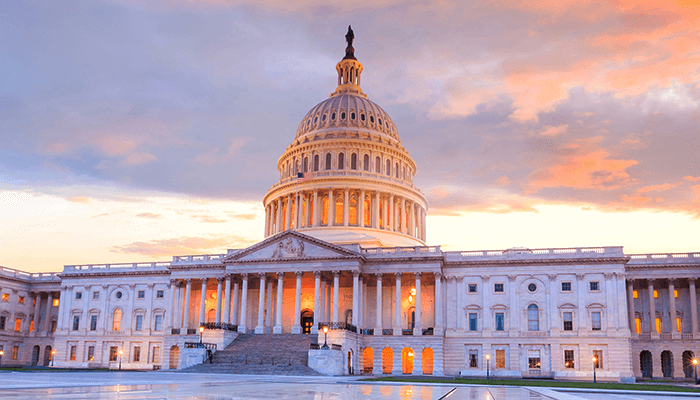President Biden's FY 2022 Discretionary Budget
Today, the Biden Administration released an abridged version of the President’s budget. This partial budget details proposed allocations and plans for the portion of the budget that is appropriated annually — known as discretionary spending — for Fiscal Year (FY) 2022. The Biden Administration proposes a $118 billion (8.4 percent) increase in spending relative to the FY 2021 level, which would cost roughly $90 billion relative to the Congressional Budget Office’s (CBO) baseline forecast.
Most of the increase would be for the non-defense (NDD) portion of discretionary spending, which would be increased by 16 percent or $106 billion. Increases are particularly concentrated among the Department of Education (41 percent), the Department of Commerce (28 percent), the Department of Health and Human Services (HHS) (23 percent), and the Environmental Protection Agency (EPA) (21 percent). The budget also proposes significant spending increases for the Departments of Agriculture (16 percent), Housing and Urban Development (HUD) (15 percent), and State (12 percent), among other departments.
The budget proposes a $12 billion (1.7 percent) increase in defense spending, which is similar to baseline levels that assume inflation growth. Base defense spending and Overseas Contingency Operations (OCO) funding would be consolidated into a single category.
Though the preliminary budget does not include any long-term estimates or proposals, the FY 2022 discretionary budget would have long-term implications. Assuming defense and non-defense increases are sustained beyond FY 2022 and grow with inflation per normal scoring conventions, they would increase discretionary budget authority (BA) by almost $1 trillion over ten years and outlays by nearly $900 billion. Including interest, this would cost almost $950 billion, about 3 percent of 2031 GDP.
The full budget could reduce this potential cost by slowing the growth of discretionary spending going forward and/or offsetting the increase with mandatory spending reductions or revenue. Such proposals are not outlined in this preliminary budget, which only focuses on the 30 percent of federal spending typically devoted to discretionary appropriations. When the full budget is released later this year, it should incorporate sufficient offsets to not only pay for this and other initiatives but secure trust funds and put the debt on a more sustainable long-term trajectory.
Details of the President’s FY 2022 Discretionary Budget
President Biden’s budget proposes $1.522 trillion of total base discretionary appropriations for FY 2022, an 8.4 percent or $118 billion increase above the FY 2021 level. Most of the increase would go to non-defense spending, which would be $106 billion, or 16 percent above FY 2021 levels.
The increase in non-defense discretionary spending is particularly large given that it comes on top of large increases over the past few years. Between 2017 and 2021, NDD grew by 21 percent. With the enactment of the President’s budget proposal, NDD would be 48 percent higher in 2022 than in 2017, compared to only 9 percent inflation growth over the same period.
In inflation-adjusted dollars, NDD appropriations would be a new record, over 15 percent higher than the previous record set in 2010. Relative to the economy, NDD would total 3.3 percent of Gross Domestic Product (GDP), which is above the 3.1 percent average over the past two decades but by no means a record.
Defense, meanwhile, would grow by $12 billion, or 1.7 percent, relative to FY 2021 levels. This is similar to the inflation growth assumed in CBO’s baseline. This more modest increase still comes on top of a 17 percent increase in the defense budget between 2017 and 2021. The FY2022 budget would make defense spending growth 19 percent since 2017.1
Proposed spending increases are particularly concentrated in the Departments of Education, Commerce, and Health and Human Services, which get 41 percent, 28 percent, and 23 percent increases, respectively. Most other departments, including Treasury and Housing and Urban Development, get double digit percentage increases, while the Departments of Veterans Affairs and Justice get 8 and 5 percent increases, respectively. Departments such as Homeland Security and Transportation have their spending held relatively flat, with increases of 0.2 and 1.2 percent, respectively (this does not account for most proposed infrastructure spending).
Spending on the Department of Defense – which differs somewhat from the defense spending category – would increase by $11 billion relative to the FY 2021 level. This is a 1.6 percent increase in nominal dollars, which similar to inflation growth assumed in CBO’s baseline. Importantly, the budget rolls Overseas Contingency Operations funding, which was $69 billion for defense in FY 2021, back into the regular defense budget rather than keeping it as a separate category for war funding.
The Cost of the President’s Proposed Spending Increase
The proposed $118 billion increase in spending relative to FY 2021 would cost about $90 billion relative to CBO’s baseline, which assumes discretionary spending grows with inflation. Though President Biden’s budget only covers FY 2022 discretionary spending, it would set the stage for further spending increases thereafter relative to the baseline.
Normal budget conventions employed by forecasters like CBO assume that (absent spending caps) discretionary spending will grow with inflation annually. Therefore, a one-year increase in spending will generate costs in future years as well.
Extrapolating the $90 billion FY 2022 increase relative to the baseline out to future years, we estimate discretionary budget authority would be almost $1 trillion above the baseline over ten years and discretionary outlays would be almost $900 billion higher. Virtually all of this spending increase would come on the non-defense side.
Including interest, spending under the budget could rise by almost $950 billion over ten years above current law, enough to increase debt to GDP from 113 percent in 2031 to 116 percent.
Importantly, the full President’s Budget will propose specific discretionary levels for future years, so the actual proposed ten-year cost could be higher or lower. Moreover, future appropriators are in no way bound by current projections and could make different choices. Nevertheless, appropriations levels in one year typically serve as an anchor point for funding levels in future years, and since FY 2021 was the final year of caps on discretionary spending under the Budget Control Act, final FY 2022 spending levels are especially likely to influence levels in future years.
Conclusion
The President’s FY 2022 discretionary budget increases non-defense discretionary spending by nearly $106 billion and defense by over $12 billion relative to FY 2021 levels. The budget includes no proposals for discretionary spending beyond FY 2022, but if spending kept pace with inflation, it would increase deficits by almost $950 billion over the next decade.
In his full budget, President Biden should put forward policies to fully offset this discretionary spending increase, pay for other policy proposals, secure major trust funds, and put the debt on a more sustainable path.
Congress, for its part, should extend the expiring discretionary spending caps in order to restore budget discipline for that area of the budget. These caps can complement other efforts to raise revenue, lower health care costs, secure Social Security, and reduce wasteful spending.
1 The 17 and 19 percent estimates include Overseas Contingency Operations spending in the total. If they were excluded, the totals would be 22 and 24 percent, respectively.

